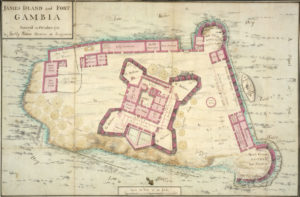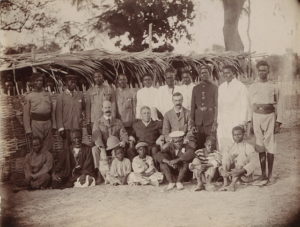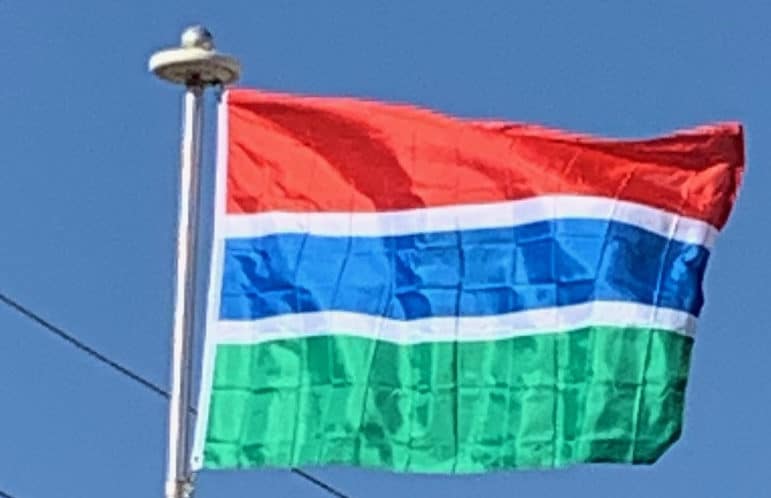During the late 17th century and throughout the 18th century, the British Empire and the French Empire struggled continually for political and commercial supremacy in the regions of the Senegal River and the Gambia River. The British Empire occupied the Gambia when an expedition led by Augustus Keppel landed there following the Capture of Senegal in 1758. The 1783 First Treaty of Versailles gave Great Britain possession of the Gambia River, but the French retained a tiny enclave at Albreda on the river’s north bank. This was finally ceded to the United Kingdom in 1856.
As many as three million people may have been taken as slaves from this general region during the three centuries that the transatlantic slave trade operated. It is not known how many people were taken as slaves by inter-tribal wars or Muslim traders before the transatlantic slave trade began. Most of those taken were sold by other Africans to Europeans: some were prisoners of inter-tribal wars; some were victims sold because of unpaid debts, and many others were simply victims of kidnapping.

Traders initially sent people to Europe to work as servants until the market for labor expanded in the West Indies and North America in the 18th century. In 1807, the United Kingdom abolished the slave trade throughout its empire. It also tried, unsuccessfully, to end the slave trade in the Gambia. Slave ships intercepted by the Royal Navy’s West Africa Squadron in the Atlantic were also returned to the Gambia, with people who had been slaves released on MacCarthy Island far up the Gambia River where they were expected to establish new lives. The British established the military post of Bathurst (now Banjul) in 1816.
Gambia Colony and Protectorate (1821–1965):
An agreement with the French Republic in 1889 established the present boundaries. The Gambia became a British Crown colony called British Gambia, divided for administrative purposes into the colony (city of Banjul and the surrounding area) and the protectorate (remainder of the territory). The Gambia received its own executive and legislative councils in 1901, and it gradually progressed toward self-government. Slavery was abolished in 1906 and following a brief conflict between the British colonial forces and indigenous Gambians, British colonial authority was firmly established.

During World War II, some soldiers fought with the Allies of World War II. Though these soldiers fought mostly in Burma, some died closer to home and a Commonwealth War Graves Commission cemetery is in Fajara (close to Banjul). Banjul contained an airstrip for the US Army Air Forces and a port of call for Allied naval convoys.
After World War II, the pace of constitutional reform increased. Following general elections in 1962, the United Kingdom granted full internal self-governance in the following year.
Post-Independence (1965–present):
The Gambia achieved independence on 18 February 1965, as a constitutional monarchy within the Commonwealth, with Elizabeth II as Queen of the Gambia, represented by the Governor-General. Shortly thereafter, the national government held a referendum proposing that the country become a republic. This referendum failed to receive the two-thirds majority required to amend the constitution, but the results won widespread attention abroad as testimony to The Gambia’s observance of secret balloting, honest elections, civil rights, and liberties.
